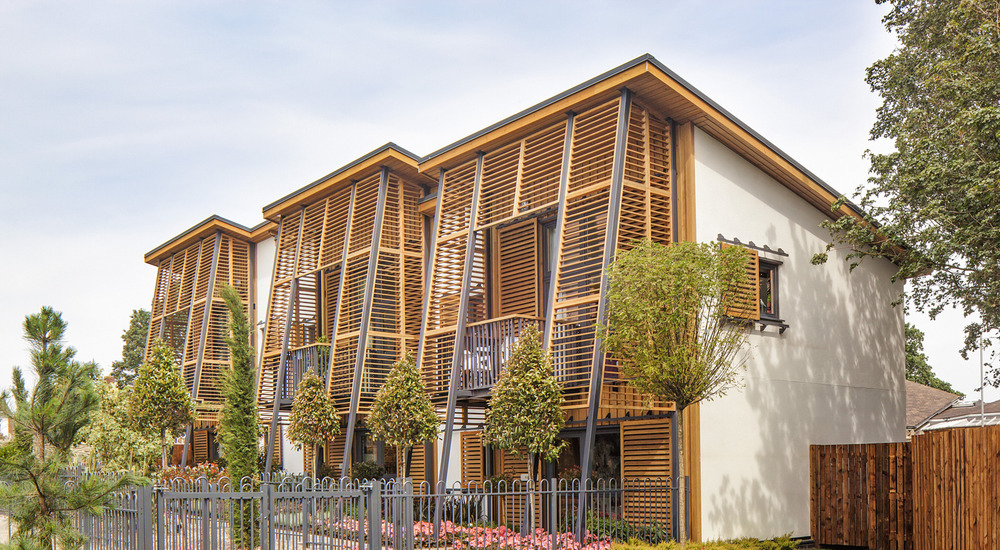Kingspan Insulation: What is a Net Zero Carbon Building?
The Committee on Climate Change (CCC) has described the decarbonising of building heating as “one of the biggest challenges in reducing emissions from the energy system to net zero by 2050.” Tackling it will require a radical reform of the construction industry, necessitating practitioners at all levels to upskill and to consider new approaches, from offsite methods to digital technologies.

Decarbonising UK energy supply
Since 1990, coal power has shrunk from 70% of UK supply to just 3% and is expected to be phased out entirely by October 1st 2024. At the same time, the country is investing significantly in renewable sources with offshore wind alone expected to provide 40 GW of power by 2030.
To take full advantage of these changes, buildings will be expected to switch away from gas or oil and instead use heat pumps which are powered by electricity and use the heat
from either the air or ground. Alongside decarbonised grid energy, these may also be powered through onsite renewables such as photovoltaic (PV) panels. District heating schemes (with zero carbon heat sources) are also expected to be utilised increasingly on larger developments.
Whilst this move to electrification of heating systems will help to address the main source of direct building emissions, it is not without its challenges. Electric power is more costly to end users than alternative heat sources - such as gas. As such, simply switching properties over to electric heat sources could substantially raise heating bills – potentially pushing homeowners into fuel poverty and raising business operating costs. The seasonality of supply also needs to be considered. During winter months, when demand is at its highest, the cooler air means air source heat pumps are less effective, whilst the low sun angle and shorter days also reduce generation from PV. If properties use energy wastefully, this could lead to a substantial increase in grid energy demand during this period, potentially increasing carbon intensities. For these reasons, work to decarbonise supply must be combined with measures to improve the energy performance of buildings.
Fabric first
It is estimated that heating demand from net zero buildings will need to be between 15-20 kWh/m2/yr. This is a significant fall from the current average of around 130-140 kWh/m2/yr and would put them on a similar performance level to the demanding Passivhaus energy efficiency standard. The approaches used within that standard can therefore act as a useful guide for project teams. This means creating buildings which are highly insulated, with close attention paid to detailing around junctions in order to limit thermal bridging. Kingspan Insulation are committed to providing the most thermally efficient insulation solutions for each application, allowing the desired level of thermal performance to be met with a slimmer construction, potentially increasing useable internal space within a property.
Additionally, it is expected that properties will need to be more airtight, with clean air supplied through mechanical ventilation and heat recovery (MVHR systems). This focus on detailing and airtightness is likely to see increased adoption of offsite solutions, such as Structural Insulated Panels (SIPs), which combine precise fabrication and excellent out-of-the-box fabric performance with a fast-track build programme.
Whole building approach
It is important that the efforts to raise the envelope performance of new and existing buildings form part of a clear holistic plan. As the CCC highlights, net zero buildings should not only use energy efficiently but should be “better adapted to a changing climate, with safe moisture levels and excellent indoor air quality.”
This is particularly crucial for existing buildings where the unique characteristics of the property need to be taken into account. PAS 2035 shows how this can be achieved. It provides a framework for how energy improvements can be delivered on domestic retrofit projects, setting out a clear process with defined roles and responsibilities to avoid unintended consequences when introducing energy efficiency measures.
One of the core components of PAS 2035 is the need for a digital passport for each building which clearly records what measures have been implemented along with their expected performance. This passport can be used to set-out the roadmap for improvements on existing properties and should also be used to record energy performance monitoring data from properties. This monitoring is seen as key to upholding standards, ensuring measures perform effectively and so closing the performance gap.
By adopting a whole building approach, with excellent fabric efficiency, and utilising decarbonised supply, it should be possible to raise many new and existing buildings to net zero emissions levels. If any demand remains, this will then be met through a recognised offsetting scheme.
Reducing Embodied Impact
Along with operational carbon, the embodied carbon of products should also be considered as part of this process. Kingspan Insulation are committed to lowering the impact of our products through a number of schemes including their Net Zero Energy target and new Planet Passionate Programme. The latter encompasses a wide range of key measures from introducing improved circularity to becoming a net zero carbon manufacturer by 2030.
For further information on CCF and our work with Kingspan Insulation, follow us on LinkedIn and Twitter.
